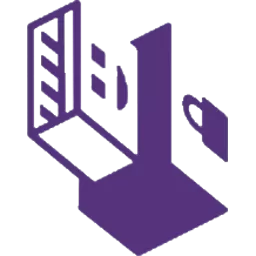Tails helps you to:
- Use the Internet anonymously and circumvent censorship
- All connections to the Internet are forced to go through the Tor network
- Leave no trace on the computer you are using unless you ask it explicitly
- Use state-of-the-art cryptographic tools to encrypt your files, emails and instant messaging
Tails is a live system that aims to preserve your privacy and anonymity. It helps you to use the Internet anonymously and circumvent censorship almost anywhere you go and on any computer but leaving no trace unless you ask it to explicitly.
It is a complete operating system designed to be used from a DVD, USB stick, or SD card independently of the computer's original operating system.
Tails comes with several built-in applications pre-configured with security in mind: web browser, instant messaging client, email client, office suite, image and sound editor, etc.
If you are interested in giving Tails a try on your current computer without running any risk, please check out our Guide: Running Linux From a USB Drive As a Virtual Machine or Bootable Disk.
What is Tails?
Tails is a portable Linux distribution based on Debian that combines the Tor network, the GNOME desktop and several other tools to offer a secure and anonymous computer experience.
How safe is Tails?
Tails is very safe as long as you do not run it on an infected machine. Tails is designed to run from a USB stick on any computer as a completely independent OS. However, if the host computer is infected with malware such as a keylogger your privacy would be at risk.
How does Tails ensure privacy?
Tails is set up out of the box to run from your computer's memory and never stores information locally unless you configure it to. This means that every time you shut down Tails, the memory is wiped clean, deleting all traces of your work and every new session starts as a blank slate.
Can I use Tails to circumvent censorship?
Yes, you can use Tails to circumvent internet censorship and browse the web anonymously. All the applications that come with Tails (email, browser, messaging client, office suite) use the Tor network to connect to the internet, so all your activity can be hidden.
Online anonymity and censorship circumvention with Tor
Tails relies on the Tor anonymity network to protect your privacy online:
- all software is configured to connect to the Internet through Tor
- if an application tries to connect to the Internet directly, the connection is automatically blocked for security.
Tor is free software and an open network that helps you defend against a form of network surveillance that threatens personal freedom and privacy, confidential business activities and relationships, and state security known as traffic analysis.
Tor protects you by bouncing your communications around a distributed network of relays run by volunteers all around the world: it prevents somebody watching your Internet connection from learning what sites you visit, and it prevents the sites you visit from learning your physical location.
Using Tor you can:
- be anonymous online by hiding your location
- connect to services that would be censored otherwise
- resist attacks that block the usage of Tor using circumvention tools such as bridges
What's New
Changes and updates
- Help troubleshoot when resizing the system partition fails the first time Tails is started.
- Error message: Resizing System Partition Failed - It will be impossible to create a Persistent Storage or apply automatic upgrades.
- Translate the date displayed in the top navigation bar.
- Clock showing date in Spanish
- Update Tor Browser to 13.0.7.
- Update the Tor client to 0.4.8.10.
Fixed problems
- Fix Tor Browser crashing when clicking on the UBlock icon. (#20061)
- Make time synchronization more reliable. (#19923)
- @BenWestgate fixed several issues in the backup feature of Tails Cloner:
- Remove message about doing a backup when no USB stick is plugged in. (#20063)
- Update available options when plugging in another USB stick. (#20042)
- Point to backup instructions when choosing to clone the Persistent Storage. (!1305)
For more details, read our changelog.


